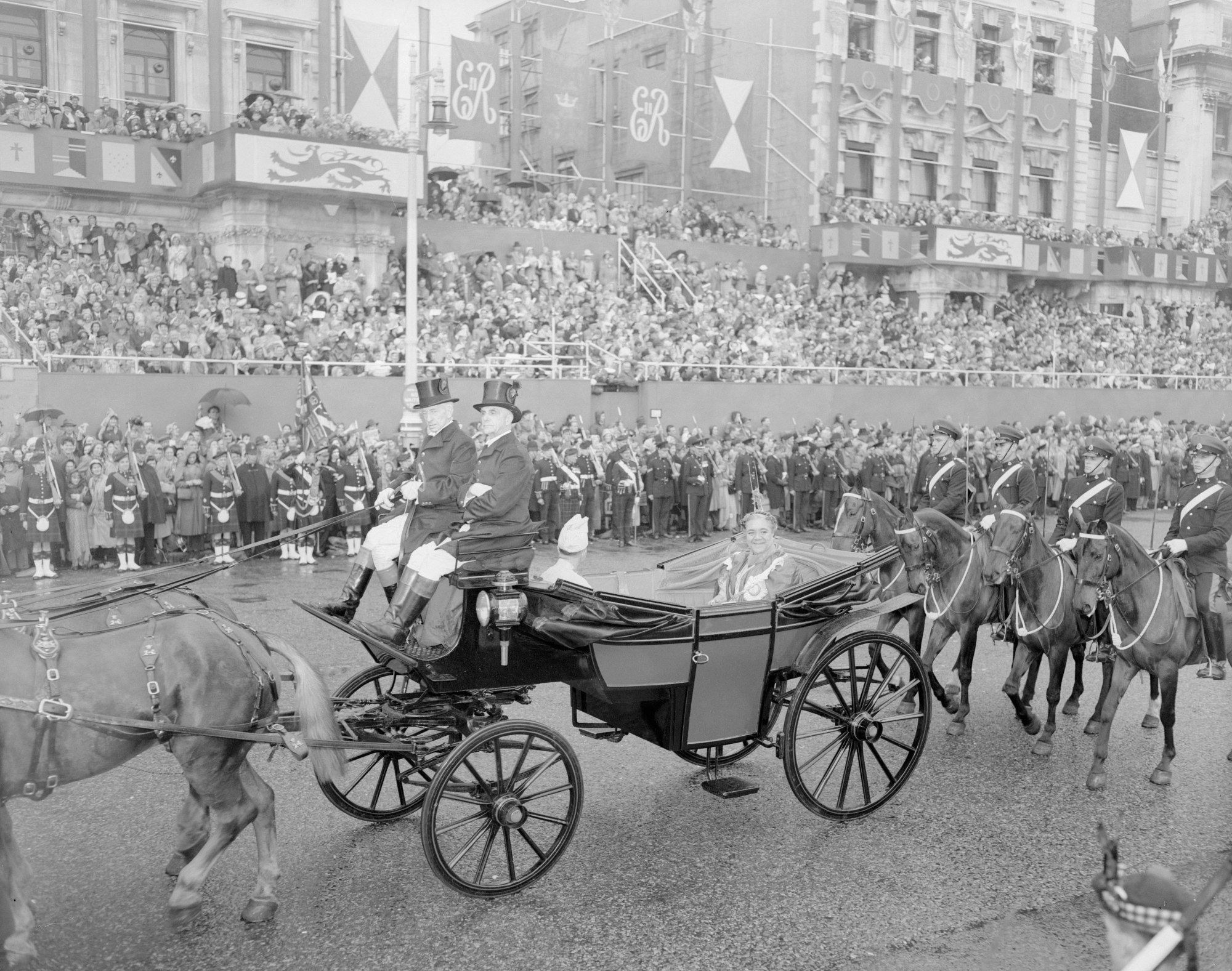
Fireworks, lion dances and loyal toasts for coronation in Hong Kong … in 1953. A lot has changed between then and King Charles’ coronation
- When Queen Elizabeth was crowned in 1953 Hong Kong played its part in the celebrations, with troops marching in London, fireworks and lion dances in the city
- King Charles’ coronation in a now-foreign country was a different matter, and a reminder of long cherished British traditions that have steadily diminished
Last weekend in London, coronation ceremonies for Britain’s King Charles III and Queen Consort Camilla came and went without a glitch. Contrasts abounded between this colourful, ritualised pageant, watched by countless millions across the world, and that held in 1953 for his mother, the late Queen Elizabeth.
In 70 years, the entire world order has changed, and Britain’s role in global affairs, while still significant, no longer resembles what it then was.
Immediately after her coronation, the new queen spoke movingly of “the living strength of the Commonwealth and Empire; of societies old and new; of lands and races different in history and origin” and went on to conclude that all these disparate strands were “united in spirit and in aim”.
In 1953, this assertion was largely true. Representatives from British-ruled populations right across the globe were active participants in those faraway London events. Pathé colour newsreels of the coronation documented the distinctively uniformed Empire and Commonwealth armed forces contingents who marched in the enormous ceremonial parade that wound through London.

Everywhere under British rule sent their representatives, and Hong Kong was no exception; the Hong Kong Volunteer Defence Corps, and other local uniformed bodies, represented the colony in the march-past.
In Hong Kong, British flags, looped masses of bunting and crowns of every size were stretched out along the roadsides from Wan Chai to Yuen Long.
Fireworks flashed everywhere on the night of the coronation, battleships at anchor in the harbour trained their searchlights over the colony’s night sky, lion dances were performed and loyal toasts were raised, from Government House to private dinner tables.
Some unexpected elements also joined in; the Communist-owned, staunchly anti-imperialist Bank of China was lit up gaily for the occasion, with royal crowns, strings of brightly coloured light bulbs, and appropriate messages of congratulation.
Commemorative booklets, coronation mugs, sets of painted glass tumblers and other themed merchandise were on sale for months beforehand; with time’s passage, yesterday’s souvenirs have mellowed into treasured heirlooms for some local families.

As with every other British territory, Hong Kong issued a special commemorative postage stamp for the occasion. One-size-fits-all was clearly the order of the day; other than changes of colour and name, the stamp is identical, whether from Fiji, Jamaica, Hong Kong, the British Solomon Islands, or Aden.
On the morning of the coronation, news flashed around the world that Mount Everest had been successfully climbed.
Long a cherished British ambition, the team was led by New Zealander Edmund Hillary; in Coronation Everest (1958) journalist James (later Jan) Morris, who was with the expedition, and broke the story, forecast the event as the beginning of a second Elizabethan era.

The English weather made a characteristic contribution in 1953 – partially reprised 70 years later – with heavy rain and a chilly midsummer temperature. In the return procession from Westminster Abbey, Commonwealth dignitaries travelled in horse-drawn coaches with the covers up against the downpour – except for one magnificent example.
Undaunted by a little rain, the perennially smiling, wildly popular Queen Salote of Tonga flatly insisted on an open coach as a mark of respect to her hostess; the diminutive, thoroughly drenched Sultan of Kelantan, who rode in the coach with her, was reportedly described later by playwright Noel Coward as “her lunch” – a pointed reference to formerly widespread cannibalism in the Pacific islands, which only ended in the 19th century.


